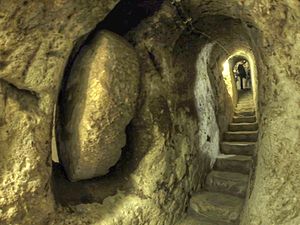I realized upon writing this chapter
that I have a new record. I turned on my computer, opened the
chapter, read the lines written last time, tried writing, then closed
everything again far more times than usual. Several times every day
for the last couple of weeks, at least. Wow!
But this has a reason. I was in a welding
training, and I don't know who of you already welded in your life, and if you can imagine how straining welding can be on the body if you do it all day, every day? There is constant heat, constant burning when you're not careful (or just clumsy in my case),
constant radiation and constant staring on the weld seam so that it
is as straight and regular as possible (which, in my occasion,
happens only at the rarest occasions, if ever). The best seam I made only got as much as
this verdict: ''Hm, hemmm, yeaaahhh, not bad, the root is good, the
hight of the seam is all right. Try being more regular next time.
You'll get there.''
Well, in two weeks I didn't get very
far... but! I got my welding licence! Yay!
Anyway, this is where I hung out for
the last couple of weeks:
The anvil must never be absent in a metalworkshop. Some of the tools which the ancient smiths used are still used today, and they're doing their job just fine.

Welding cabins like these help prevent the accidental glance into the electric arc of the welding machine of your neighbour and are fully equipped with an exhaust system for toxic smoke, chipping hammers to remove scoria from the weld seams, scratch brushes and holding devices for your workpieces to practice on.
Here some welding rods with different sizes, coating or material. Personally I don't like welding with those...
 |
| The TIG head I used |
My favourite welding method is the TIG welding, or tungsten inert gas welding, which uses a tungsten electrode and argon gas to heat up and shield the molten metal from the oxygen in the air. It is silent and doesn't produce any sparks, but is fairly diffcult to master since you see even the slightest wrong move in the finished weld seam. What infuriated me was that my learning collegues always threw their messed-up workpieces into the bin with as much force as possible, and I jumped every time at the banging, ruining thus the seam I was desperately trying to perfect.
Sorry for this little bit above, clearly this has nothing to do with Twilight Princess. But I was fascinated with welding ever since I saw my dad perform this complex operation on one of our cars years ago, being maybe five or six years old. I wanted to learn it ever since, and now that I've got my licence I've sorta fulfilled a dream of mine, and I'm just happy :D
But I haven't been totally idle with my research.
Kakarkio's cellar:
While writing, I just got swept through
the scenes. As Barnes was cowering in the corner with his two meat
slices, I thought that he'd better be left alone. So I let everyone
retreat into the cellar right underneath the sanctuary, which was
after all the safest place in the entire village at that moment.
While writing about those tunnels, I had lots of different references
in mind: Minecraft, bunkers during WW2, the underground refuges from
Reign of Fire (movie), the Egyptian Pyramids (a little bit far,
maybe), but the one thing I truly based the new cellar on was
Derinkuyu, the mysterious underground city in Turkey, which I
stumbled across as I was looking for round stone doors.
| A characteristic tunnel of Derinkuyu |
This city found by accident in 1963 was
first built by the Byzantine Empire, the eastern half of the Roman
Empire, where it was used as a protection against Muslim Arabs during
the Arab-Byzantine wars. It extends to a depth of about 200 feet and
is large enough to have sheltered over 20'000 people, with their
livestock and food stores! Characteristic are those round stone doors
that could be moved across the tunnels at strategical points to block
off the way.
Just look at the size of this whole thing! You could imagine an anthill!
The round door found its use in the novel, however it didn't block off a corridor but was merely used as an entrance door, with a similar opening mechanism found in the Forest Temple as well.
The cellar from Kakariko only has a
fraction of Derinkuyu's size, but I'll keep this underground city in
mind and maybe even include it in a bigger city of Eldin.


